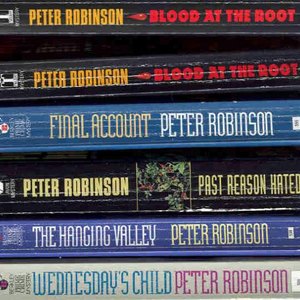
Determining the fair market value of used books for the purpose of charitable donations is tricky because there is no formula that can be applied or definitive source on the subject. There are, however, some general guidelines that can be looked to when trying to determine the value of used books, such as how fair market value is defined by the IRS as well as information about different types and conditions and how these factors affect value.
Read the official IRS definition of fair market value on the IRS website (see Resources below). In sum, the IRS defines fair market value when applied to used as what a book is worth on the open market or the price that a buyer and seller agree is fair.
Consider the type of book being donated when deciding on the fair market value. Hardcover books cost more than softcover books when they are new and therefore the fair market value of hardcover books will be higher. Additionally, hardcover books with a leather binding will have a higher fair market value than those with a cloth binding.
Look at the condition of the book. The classification system that professional book appraisers use when appraising rare, collectible books can be helpful when determining the condition of the book that is being donated. Appraisers' grades for book conditions are: very fine, fine, near fine, very good, good and fair to poor. These grades take into consideration the amount a book has been handled as well as whether a book has torn, missing or loose pages. Also considered in these grades are stains on book pages and whether the binding is intact. Bindings can break, become weak or be altogether missing, and all of these factors decrease the fair market value of a book.
Make a check list that includes the binding type and the items that affect the condition of a book. With the book to be donated in hand refer to this check list to determine the most appropriate grade for the book. Based on the grade of the book, come up with a range of of prices that could be considered fair market value.
Imagine the book is being priced for a garage sale. Use the price that the book would most likely sell for on the first day of a garage sale. This price can be considered the fair market value of the book.
Tips
Always write down the names of donated books and each book's fair market value on an itemized list to submit to the IRS.
Warnings
It is always better to understate the perceived fair market value of a book than to err on the high side.
References
- Microsoft. "Earnings Release FY20 Q4." Accessed Nov. 1, 2020.
- Walmart. "Walmart 2020 Annual Report," Page 52. Accessed Nov. 1, 2020.
- Nasdaq. "MSFT Historical Data." Accessed Nov. 1, 2020.
- Walmart. "Walmart 2020 Annual Report," Page 50. Accessed Nov. 2, 2020.
- Nasdaq. "WMT Historical Data. Accessed Nov. 2, 2020.
Resources
Tips
- Always write down the names of donated books and each book's fair market value on an itemized list to submit to the IRS.
Warnings
- It is always better to understate the perceived fair market value of a book than to err on the high side.
Writer Bio
Laura Payne has been freelance writing for several online publications in her free time since 2006. She holds a Master of Arts in linguistics from Wayne State University and a Bachelor of Arts in journalism from Oakland University. Payne teaches linguistics classes at both universities on an adjunct basis.

